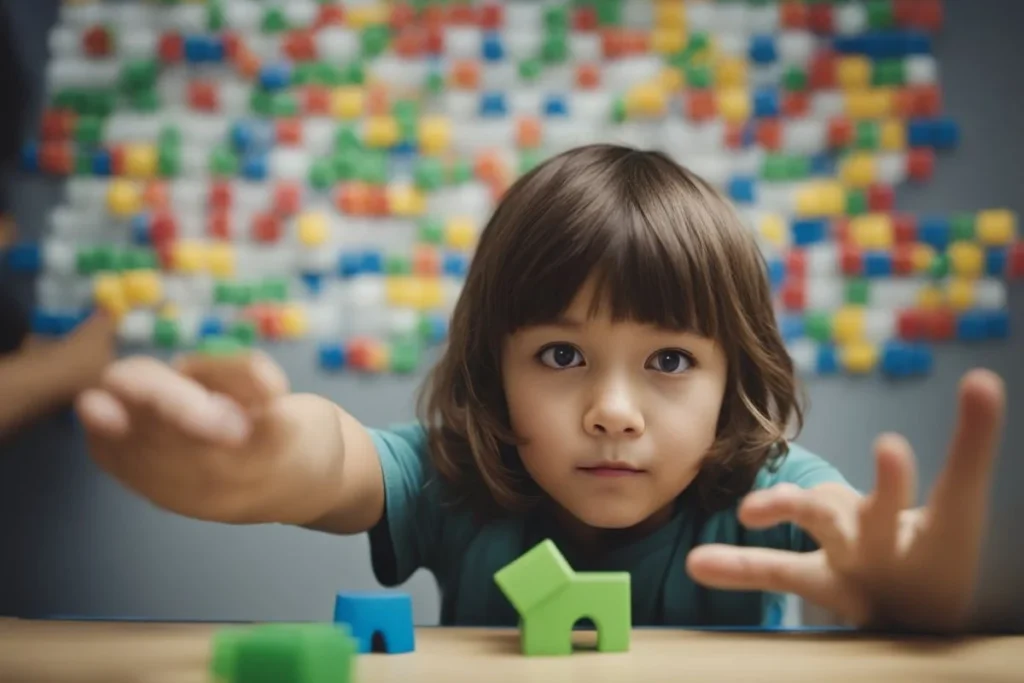Autism Spectrum Disorder (ASD) is a neurodevelopmental disorder that affects communication, social interaction, and behavior. According to the Mayo Clinic, signs of ASD typically appear in early childhood and can persist throughout life.
ASD is a complex disorder, and the exact causes are still not fully understood. However, research suggests that a combination of genetic and environmental factors may contribute to its development.
Spectrum of Behaviors
ASD is a spectrum disorder, which means that it affects individuals in different ways and to varying degrees. Some children with ASD may have difficulty with social interaction but have no problems with language or cognitive development. Others may have significant language delays or intellectual disabilities.
According to the National Institute of Child Health and Human Development, common early signs of ASD include:
- Lack of or delay in spoken language
- Repetitive use of language and/or motor mannerisms
- Little or no eye contact
- Lack of interest in peer relationships
- Lack of spontaneous or make-believe play
- Persistent fixation on parts of objects
It is important to note that not all children with ASD will exhibit these behaviors, and some children who do not have ASD may exhibit similar behaviors. A diagnosis of ASD should only be made by a qualified healthcare professional after a comprehensive evaluation.
Early Behavioral Signs
Autism spectrum disorder (ASD) is a neurodevelopmental disorder that affects communication, social interaction, and behavior. The symptoms of ASD can vary widely, but they typically appear in early childhood. It is important to recognize the early signs of ASD so that children can receive early intervention services.
Lack of Social Interaction
One of the early signs of ASD is a lack of social interaction. Children with ASD may not respond to their name, avoid eye contact, and seem to prefer playing alone. They may not engage in typical social behaviors, such as smiling, sharing toys, or playing games with others.
Reduced Eye Contact
Reduced eye contact is another early sign of ASD. Children with ASD may avoid looking at others, or they may stare at people or objects for long periods. They may not use eye contact to communicate or show interest in others.
Delayed Speech Development
Delayed speech development is also common in children with ASD. They may not babble or make other sounds by the time they are 12 months old. They may not say their first words until after 16 months of age, and they may have difficulty with language development and understanding social cues.
It is important to remember that not all children with ASD will show the same early signs, and some children may not show any signs until later in childhood. However, if parents or caregivers have concerns about their child’s development, they should talk to their pediatrician or a developmental specialist. Early intervention can help children with ASD develop the skills they need to communicate, socialize, and thrive.
Physical and Motor Signs
Autism Spectrum Disorder (ASD) is a developmental disorder that affects communication, social interaction, and behavior. Early signs of autism in toddlers can often be observed in their physical and motor skills. Here are some common physical and motor signs that parents and caregivers should look out for:
Repetitive Movements
Repetitive movements are a common physical sign of autism in toddlers. These movements may include hand flapping, finger flicking, rocking back and forth, or spinning in circles. Toddlers with autism may also engage in repetitive behaviors such as lining up toys or objects in a specific order or repeating certain words or phrases.
Unusual Postures
Another physical sign of autism in toddlers is unusual postures. Toddlers with autism may assume unusual postures such as standing on their tiptoes or walking on their toes, which is also known as toe-walking. They may also have difficulty with gross motor skills such as running, jumping, or climbing stairs.
It is important to note that not all toddlers with autism will exhibit these physical and motor signs. However, if parents or caregivers notice any of these signs, they should consult with a healthcare provider for further evaluation and diagnosis. Early intervention is key in helping toddlers with autism reach their full potential.
Sensory Processing Differences
One of the early signs of autism in toddlers is sensory processing differences. Children with autism often have difficulty processing sensory information from their environment. They may be over-sensitive or under-sensitive to certain sensory stimuli.
Over-Sensitivity
Over-sensitivity to sensory stimuli is a common symptom of autism. Children with autism may be hypersensitive to certain sounds, textures, tastes, smells, or visual stimuli. For example, they may cover their ears or scream when they hear a loud noise, or they may refuse to eat certain foods because of their texture or taste. They may also be very sensitive to light or touch and may become upset when someone touches them unexpectedly.
Under-Sensitivity
Under-sensitivity to sensory stimuli is another common symptom of autism. Children with autism may be hypersensitive to certain sensory stimuli. For example, they may not feel pain or temperature changes as strongly as other children, or they may seek out sensory stimulation by spinning, rocking, or flapping their hands. They may also have difficulty with balance and coordination and may be clumsy or uncoordinated when playing sports or other activities.
It is important to note that not all children with autism will have sensory processing differences, and not all children who have sensory processing differences have autism. However, if you notice that your child is showing signs of over-sensitivity or under-sensitivity to certain sensory stimuli, it may be a good idea to talk to your pediatrician or an autism specialist to determine if further evaluation is needed.
When to Seek Professional Advice
It can be challenging for parents to determine whether their child’s behavior is just a normal part of development or a symptom of autism spectrum disorder (ASD). However, some signs may indicate a need for professional advice.
If a child is not meeting developmental milestones, such as not responding to their name, not pointing at objects to show interest, or not speaking any words by 16 months, parents should consider seeking professional advice. Additionally, if a child loses previously acquired skills, such as no longer babbling or making eye contact, parents should seek advice.
Parents should also consider seeking advice if their child exhibits repetitive behaviors, such as hand flapping or lining up toys, or if they have difficulty with social interactions, such as not making eye contact or not responding to social cues. These signs may indicate ASD or another developmental disorder.
It’s important to remember that every child develops at their own pace, but if parents have concerns about their child’s development, seeking professional advice can provide peace of mind and ensure that any necessary interventions are implemented early on.







